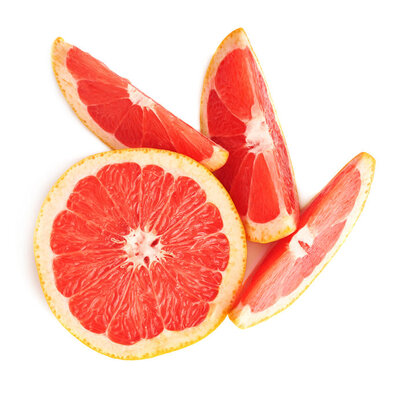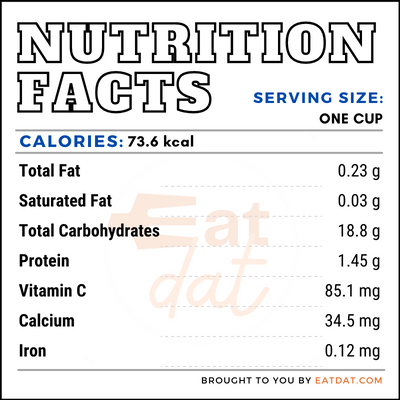
Grapefruit
What is Grapefruit?
Grapefruit is a citrus fruit that has a soft flesh like an orange and a juicy interior, which is segmented. It is called a grapefruit because it appears in clusters on the tree, similar to grapes. This fruit is basically a hybrid between sweet oranges and pomelos.
- Different varieties of this fruit include white, pink, and ruby red.
- This fruit has a tart and bitter flavor due to the presence of naringin, though some varieties are sweeter.
The top 10 largest citrus fruits include:
- Pomelo
- Cedro Citron
- Corsican Citron
- Grapefruit
- Pompia
- Orangelo
- Etrog
- Oroblanco
- Blood Orange
- Iyokan Orange
Origin of grapefruit
This fruit is a hybrid between the pomelo and the orange. However, in 1837, it was classified as a pomelo variety. It was only in 1949, more than a century later, that botanists discovered the truth. This fruit is a native fruit of Barbados, and was first recorded by Europeans in 1750, who called it the “forbidden fruit”.
Count Odette Phillipe took seeds from this fruit to Florida, where its trees grew in abundance. In 1870, John MacDonald established the first nursery for this fruit in the US. The Ruby Red cultivar was created in Texas when a citrus grower discovered a red grapefruit growing on a pink grapefruit tree in 1929.
Nutrition
Nutritional profile for this fruit (1 cup):

This fruit is rich in calcium, magnesium, phosphorous, potassium, vitamin C, and folate.
Also, it is low in calories and has a low glycemic index, which makes it suitable for diabetes patients. Additionally, this fruit contains naringin, a flavonoid which improves glucose tolerance in people with diabetes. Regular consumption of the fruit helps in maintaining heart and skin health, as well as preventing strokes and some types of cancers.
However, mixing this fruit with certain drugs should be avoided. Grapefruit inhibits a chemical in the intestine needed to break down many pharmaceutical drugs in the body. These include medications for regulating blood pressure and cholesterol, suppressing the immune system, sedatives, and AIDS medicines. Steroids and asthma medicines may also be harmful.
Commercial production
Grapefruit production requires a warm climate and full sun. The plant thrives in well-drained loamy soil and takes three years before they start producing fruit. Harvesting takes place when the fruits fully mature for the sweetest results.
The world’s largest producer of this fruit is China, followed by the USA, Vietnam, Mexico, India, South Africa, Turkey, Thailand, and Sudan.
Grapefruit recipes
This fruit is usually consumed raw as a fruit. It can be easily incorporated into salads. Also, it can be used to make juice, which is then used for marinating meats, cheeses, and vegetables. Here are a few recipes:
- Grapefruit Bars
- Yogurt Parfait
- Broiled Grapefruit
- Fruit Salad
- Glazed Ham
- Chocolate Covered Fruit
- Candied Grapefruit Peel
FDA regulations
The FDA describes all fresh fruits as raw agricultural commodity and strictly regulates all aspects its growing, harvesting, packing, and storage. Also, the FDA regulates canned varieties of this fruit, which is defined as food prepared from sound, matured grapefruit with water or syrup.
References
Morton, J. 1987. Grapefruit. p. 152–158. In: Fruits of warm climates. Julia F. Morton, Miami, FL.
https://hort.purdue.edu/newcrop/morton/grapefruit.html
Murunga, Alfred N et al. “Grapefruit Derived Flavonoid Naringin Improves Ketoacidosis and Lipid Peroxidation in Type 1 Diabetes Rat Model.” PloS one vol. 11,4 e0153241. 13 Apr. 2016, doi:10.1371/journal.pone.0153241
https://www.ncbi.nlm.nih.gov/pmc/articles/PMC4830547/
Grapefruit and medication: A cautionary note, Harvard Medical School, Harvard Health Publishing
https://www.health.harvard.edu/staying-healthy/grapefruit-and-medication-a-cautionary-note
